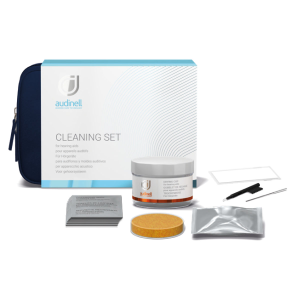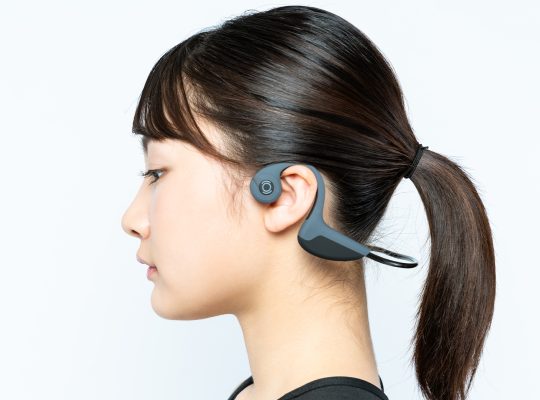Maintaining an in-the-ear hearing aid (ITE) is essential for the life of the device and to ensure that your hearing remains optimal. Regular maintenance and cleaning help maintain the device’s performance and reduce the risk of repairs. In this comprehensive guide, you will discover how to best maintain your in-the-ear hearing aid to keep it in top condition.
Why is maintenance of in-the-ear hearing aids important?
Hearing aids come into contact with earwax, dust, dirt and moisture on a daily basis. These elements can interfere with the device’s sensitive electronics and affect the hearing experience. Regular maintenance prevents your hearing aid from becoming clogged or damaged, which extends the life of the device and ensures that it continues to function optimally.
What makes in-the-ear hearing aids vulnerable?
In-the-ear hearing aids sit in the ear canal, meaning they are exposed daily to factors such as:
- Earwax (cerumen): Earwax can accumulate in the ear canal and in the instrument itself, which can reduce the performance of the hearing aid.
- Moisture: Sweating, humid air or accidental contact with water can cause damage to the electronics.
- Dust and dirt: Exposure to external contaminants can damage the sensitive components of the device.
By following a few simple maintenance tasks, you can ensure that your hearing aid lasts longer and performs better.
Daily care of an in-the-ear hearing aid
1. Cleaning your hearing aid
One of the most important steps in maintaining your in-the-ear hearing aid is daily cleaning. This can easily be done with the right tools, such as a cleaning brush and cloth. Here’s how to go about this:
- Remove ear wax: Use the small brush that usually comes with the hearing aid to gently remove ear wax and debris from the surface of the device. Pay particular attention to the opening of the microphone and speaker.
- Wipe with a dry cloth: Make sure your hearing aid is dry by wiping it with a soft, dry cloth. Avoid damp wipes or cleaning agents that contain water, as these can cause damage.
- Check the wax filter: Many in-the-ear hearing aids are equipped with a wax filter that helps prevent wax from entering the device. Check this filter regularly and replace it if necessary. This can significantly improve sound quality.
-
 Audinell cleaning set ITE€29,95
Audinell cleaning set ITE€29,95
2. Replacing and charging batteries
If your hearing aid runs on disposable batteries, check daily to make sure the battery still has enough power. Many hearing aids give a warning when the battery is low, but it is a good idea to check regularly yourself.
For rechargeable hearing aids, it is important to charge them every night so that they are ready for use the next day. When charging, make sure the charging ports are clean and free of dust so that the device can charge properly.
3. Treat with care
Although modern hearing aids are rugged, they are still susceptible to being dropped, bumped or exposed to water. When you are not using your hearing aid:
- Store it in a safe place: Use the included storage case and place it in a dry place.
- Avoid exposure to extreme temperatures: Do not expose your hearing aid to extreme heat or cold as this may damage the electronic components.
- Avoid water: In-the-ear hearing aids are not waterproof. Be sure to take them off before showering, swimming or going to the sauna.
Weekly maintenance of in-the-ear hearing aids
In addition to daily care, it is also important to follow a thorough weekly cleaning routine. This helps remove more stubborn dirt or earwax that has built up over the week.
1. Thorough cleaning
Once a week, you can clean your hearing aid more thoroughly. You do this by removing and cleaning the parts that come in contact with your ear, such as the dome or earplug. To do this, use the following steps:
- Dome or earplug cleaning: If your hearing aid has a removable dome, you can gently loosen it and clean it with a cloth. Replace it if necessary.
- Use an air dryer: Drying boxes designed specifically for hearing aids or electronic drying systems can help remove moisture that has accumulated in the hearing aid.
-
 Widex PerfectDry Lux€89,00
Widex PerfectDry Lux€89,00
2. Check for wear
With weekly maintenance, it is also important to check for signs of wear, such as:
- Loose parts: Check that all parts of the hearing aid are tight and free of play.
- Worn dome or filter: If you notice that the dome (earpiece) is worn out, replace it as soon as possible. This also applies to the wax filter, which should be replaced regularly to prevent blockages. Of course, you can obtain all these accessories in our web shop.
Monthly maintenance and professional cleaning
Even with the best care, a hearing aid can wear down or accumulate dirt over time. Therefore, it is wise to have your hearing aid professionally cleaned by a hearing care professional (that’s us!) about once a year. This ensures that the hard-to-reach parts of the device are thoroughly cleaned and that your hearing aid continues to function properly.
Tips for extending the life of your hearing aid
In addition to daily and weekly maintenance tasks, there are a few general guidelines you can follow to extend the life of your hearing aid:
- Use a dry box: Especially during the hot months or if you sweat a lot, it can be helpful to use a dry box. This removes moisture and prevents corrosion of the internal electronics.
- Regular checkups at the audiologist: Schedule annual checkups at your audiologist to have the performance of your hearing aid evaluated. They may also make minor repairs or recommendations for further care.
- Be careful with hair products: If you use hairspray or other styling products, take off your hearing aid first to prevent the chemicals from damaging the electronics.
Conclusion
Maintaining an in-the-ear hearing aid does not have to be a time-consuming chore, but regular care and cleaning are essential to ensure that your aid continues to work optimally. Daily cleaning, weekly thorough maintenance and occasional professional cleaning can significantly extend the life of your hearing aid. By taking good care of your hearing aid, you can ensure that you can always enjoy the best sound quality and hearing support.
With proper attention, your in-the-ear hearing aid will stay in top condition and you can enjoy clear sound for longer!









